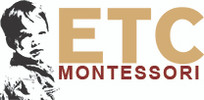
Part II
In part one we discussed how the brain learns things best aurally and that the process of learning to read is not a natural thing. Yet, children do learn to read. Some sooner than others, some more easily than others. Others struggle their whole lifetime to gain the basics of this necessary skill. Why are there such disparities between children? It doesn’t have to be this way.
It turns out that the more phonics instruction children receive the easier it is to learn this unnatural skill. However, for the past twenty years a system of “cueing” has been used to help children when they run across an unknown word. The cues are as follows:
- What word makes sense in the context? (So, dog could be “read” for puppy.)
- Does the word sound correct? (Initial sounds are introduced, so horse could be “read” as hog.)
- Does the word look correct? (So, resolve could be “read” as revolve.)
In this system, children get the impression that reading is a guessing game. Additionally, children are shown high frequency words (generally sight words, but not all) and told that they need to memorize these to read them, you can see where children become confused. Admittedly, some of this confusion is because English is not a completely phonetic language, unlike Italian or Spanish. However, if you know the patterns, approximately 84% of the English language is phonetic.
Our Montessori classrooms have been using phonics as the base of our reading programs, even when it was not the current trend for reading instruction. The sequence is, we introduce the child to isolated sounds in “I Spy”, and then associate these sounds with a grapheme, (sandpaper letter). As the child grows in their ability to remember the sound/symbol associations, word building is introduced using the C/V/C pattern. Once these are mastered, blends are introduced with some sight words, and finally the child is introduced to ways to make long vowel sounds. Depending on the age group, children may be introduced to the fifteen basic long vowel patterns or may go through all the 44 different phonograms. Regardless, phonics instruction is systematic and began early. Dr. Montessori’s belief is that the sensitive period for language is between the ages of 4 ½ and 6 years. But remember, that all new learning begins with aural instruction. Phonemic awareness is the precursor to sound/symbol association and is just as important to the young three-year-old as Practical Life and Sensorial.
Unfortunately, this is not what I see in some of our Montessori early childhood or elementary environments. Often, the “green series” where we introduce phonograms is not present in the early childhood environment. When consulting in a school one veteran teacher categorically told me this work was only for the elementary classroom. I disagree. First, this completely discounts the purpose of sensitive periods. Secondly, if long vowel words are introduced in the elementary classroom, there is little hope of accessing the beginning elementary curriculum which depends on the ability to read.
As for the phonics instruction in elementary, let’s take a closer look. Is it a repetition of what was supposed to be in the early childhood environment? Is it a systematic approach that allows the child to grow in their phonics instruction through all three years of elementary? If the sequence presented has mostly pictures, labels, small books, and word lists, chances are this is meant for the early childhood classroom. We must be mindful of the developmental level of the children we teach, and make sure that the materials that we use are still developmentally responsive.
Yet, using this systematic instruction there are still times when the child has delays in moving through this sequence. Have you noticed that in some of the activities a child will laboriously sound out, /c/, /a/, /t/ and still not be able to associate meaning with the sounds? It turns out that there are skills missing from our sequence that would ameliorate this delay- all having to do with phonemic awareness.
Remember, the brain initially learns concepts aurally. Providing opportunities for children to segment sentences into words, words into syllables, syllables into phonemes, and to make substitutions within this sequence are all ways of “playing” with language that facilitate reading. Those forgotten nursery rhymes, listening to compound words, and breaking them into their component parts, removing the first sound of a word and replacing it with another, all promote phonemic awareness. These are some of the games that we can play at circle time.
Ideally, when children hear these aurally first, they can then follow up with specifically designed shelf activities that will allow the child to work independently with pictorial content. For phonemic awareness activities do not have letters within the material. This is reserved for when children can “hear” the different sounds within each sentence, word, or syllable. Perhaps in the past, we introduced sandpaper letters too soon. The Science of Reading says that just working on identifying initial sounds is not enough, and I know this is true. Children hear the initial sounds of a word first, then the ending sound, then the medial consonant, and finally the medial vowel. This explains why C/V/C word building can be troublesome.

Elkonin Boxes allow children to segment the sounds in a word and place a marker for each sound they hear before any letters are introduced.)
Playing substitution games will also promote phonemic awareness. “If I take the word bat remove the /b/ and replace it with a /m/, what’s my new word?” However, we need not stop with just initial sounds. “If I take the word grate and remove the /t/ and replace it with a /p/, what’s my new word? See, when you are working aurally with words you do not have to limit the vocabulary based on C/V/C patterns.
This leads us to the final point of this section, vocabulary. Montessori classrooms are full of vocabulary. From naming of objects, identifying continents, matching leaf shapes, and just about anything else that can be made into a three-part card. It turns out that prior knowledge and the vocabulary associated with that knowledge is an equal part in the equation leading to reading comprehension. In the early childhood classroom, this is a major function of all the areas but can be extended more fully to the cultural area. Science, geography, and history are introduced in early childhood, but are the core of the elementary classroom. In fact, the further you proceed in elementary the more time is spent in this curriculum. So, in answer to those proponents who say more time needs to be spent in Language Arts to improve reading scores, I say look at the research. When we spend time working in areas that require our students to read, comprehend, write, and present content on subjects that actually interest them, we are teaching Language Arts! Teachers, look at the amount of time that is spent in presenting and proving follow-up activities in Cultural. If you are presenting large group presentations twice a week with minimal follow up, you are not using best practices.

